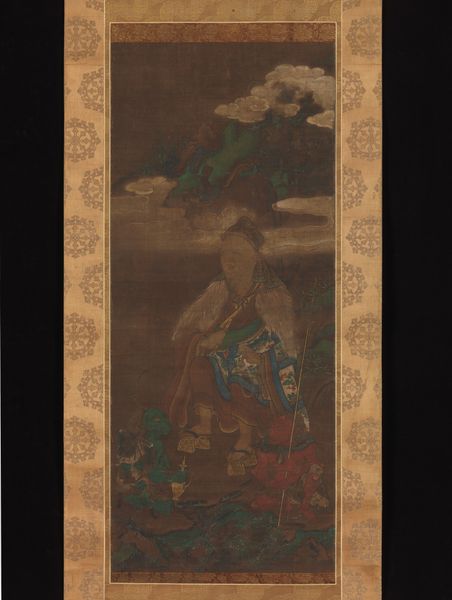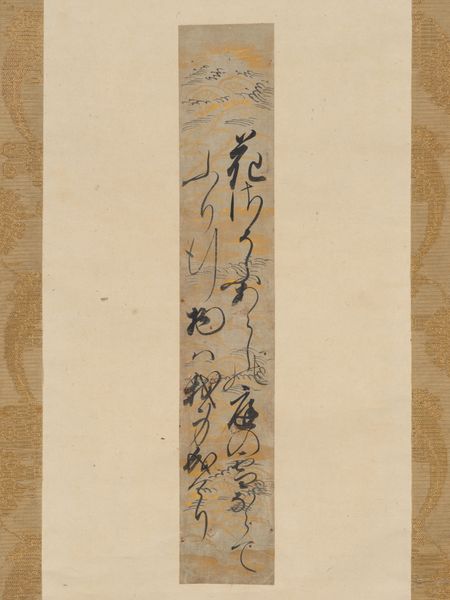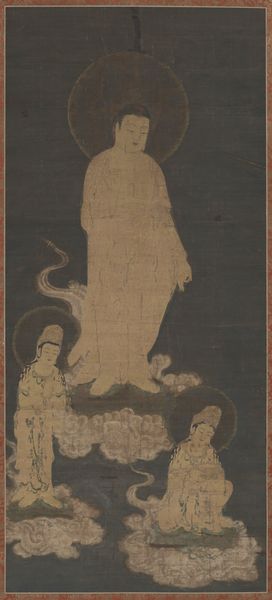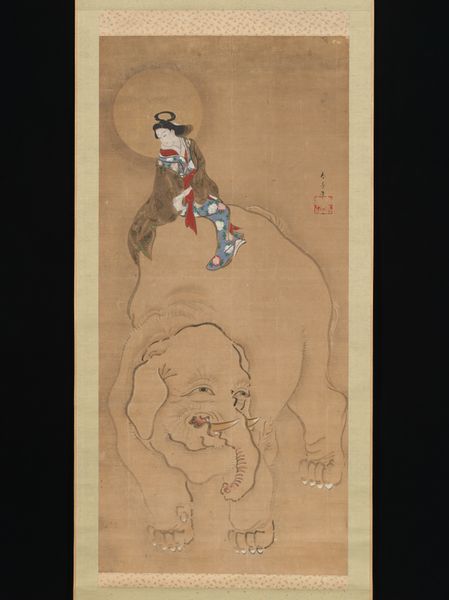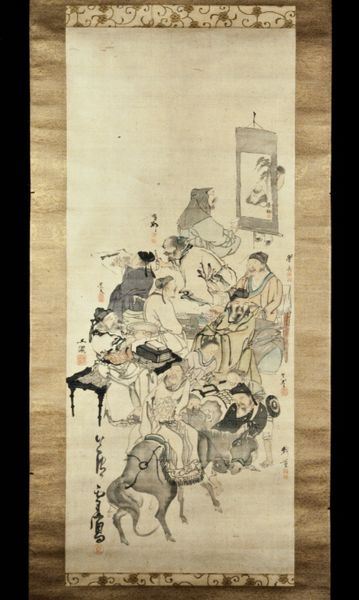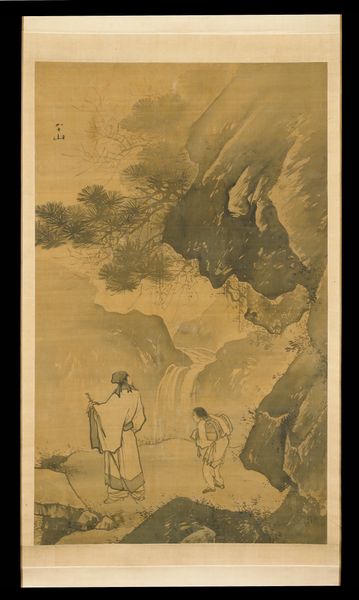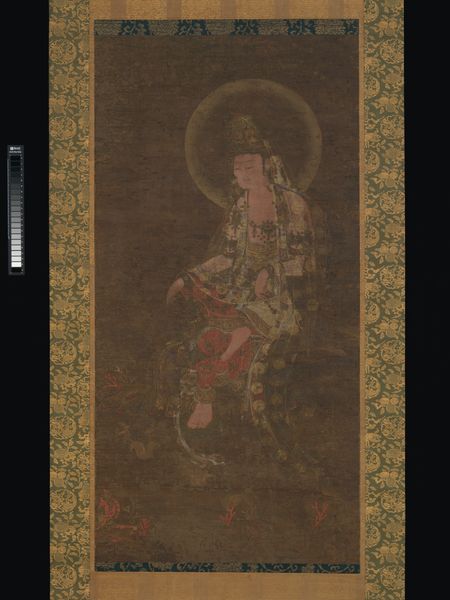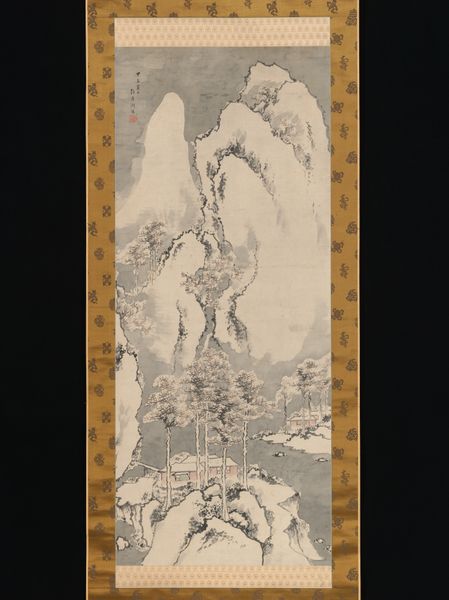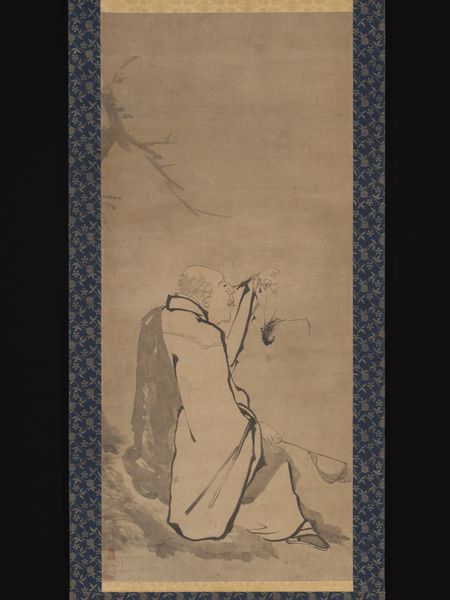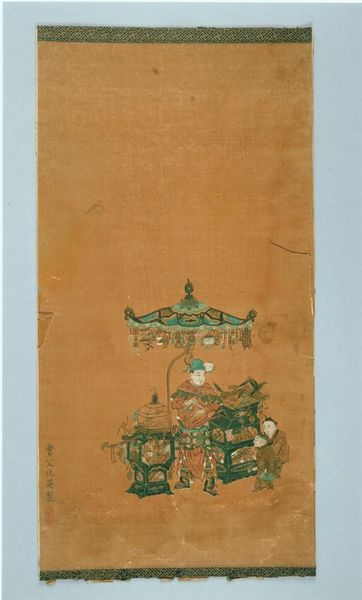
Fudō Myōō with Four Attendants, Outlined in Seed Syllables 1450 - 1499
0:00
0:00
drawing, paper, ink
#
drawing
#
asian-art
#
figuration
#
paper
#
ink
#
earthy tone
#
history-painting
Dimensions: Image: 39 15/16 × 17 1/16 in. (101.5 × 43.4 cm) Overall with mounting: 67 11/16 × 22 15/16 in. (172 × 58.3 cm) Overall with knobs: 67 11/16 × 25 3/16 in. (172 × 64 cm)
Copyright: Public Domain
Curator: Looking at this artwork, “Fudō Myōō with Four Attendants, Outlined in Seed Syllables,” I’m struck by its subtle intensity. What are your first impressions? Editor: It's austere, almost ghostly. The figures barely emerge from the earthy-toned paper. There's a vulnerability in this understated presentation, despite what I imagine is a powerful subject. Curator: Precisely. Created between 1450 and 1499 by Chikai, it renders the Buddhist deity Fudō Myōō in ink on paper, surrounded by attendants. But unlike many depictions brimming with color and fierce detail, here, the forms are delineated with delicate outlines and seed syllables—mantric symbols with deep spiritual resonance. Editor: It’s as if we’re seeing a preliminary sketch, stripped of later additions. I wonder, what does this almost "unfinished" state reveal about its intended audience or its function at that time? Was it meant for private devotion, or does its spareness convey something about the sociopolitical context in which it was created? Curator: Interesting questions! The use of seed syllables is particularly significant. In esoteric Buddhism, these syllables ARE the deity; they embody the transformative power of Fudō Myōō. So, perhaps the image prioritizes spiritual essence over elaborate representation. The minimalism might also be connected to periods of social upheaval. Periods of social unease and turmoil sometimes turn inward. The restraint perhaps reflecting this inclination? Editor: It challenges conventional notions of religious art as being overtly didactic or propagandistic. Instead, it appears to invite contemplation, asking the viewer to actively engage with the symbolism and, as you say, the essence of Fudō Myōō. A far cry from the opulent displays often favored by religious institutions looking to cement their power! Curator: Precisely. Even the attendants, typically rendered with individualized features and expressions, are reduced to essential forms, emphasizing the overarching unity of the spiritual vision. Editor: So, by foregoing elaborate detail, this artwork encourages us to focus on the foundational principles and spiritual continuities underlying these powerful visual symbols. Curator: Absolutely. This drawing reminds us of the potency found in simplicity.
Comments
No comments
Be the first to comment and join the conversation on the ultimate creative platform.
